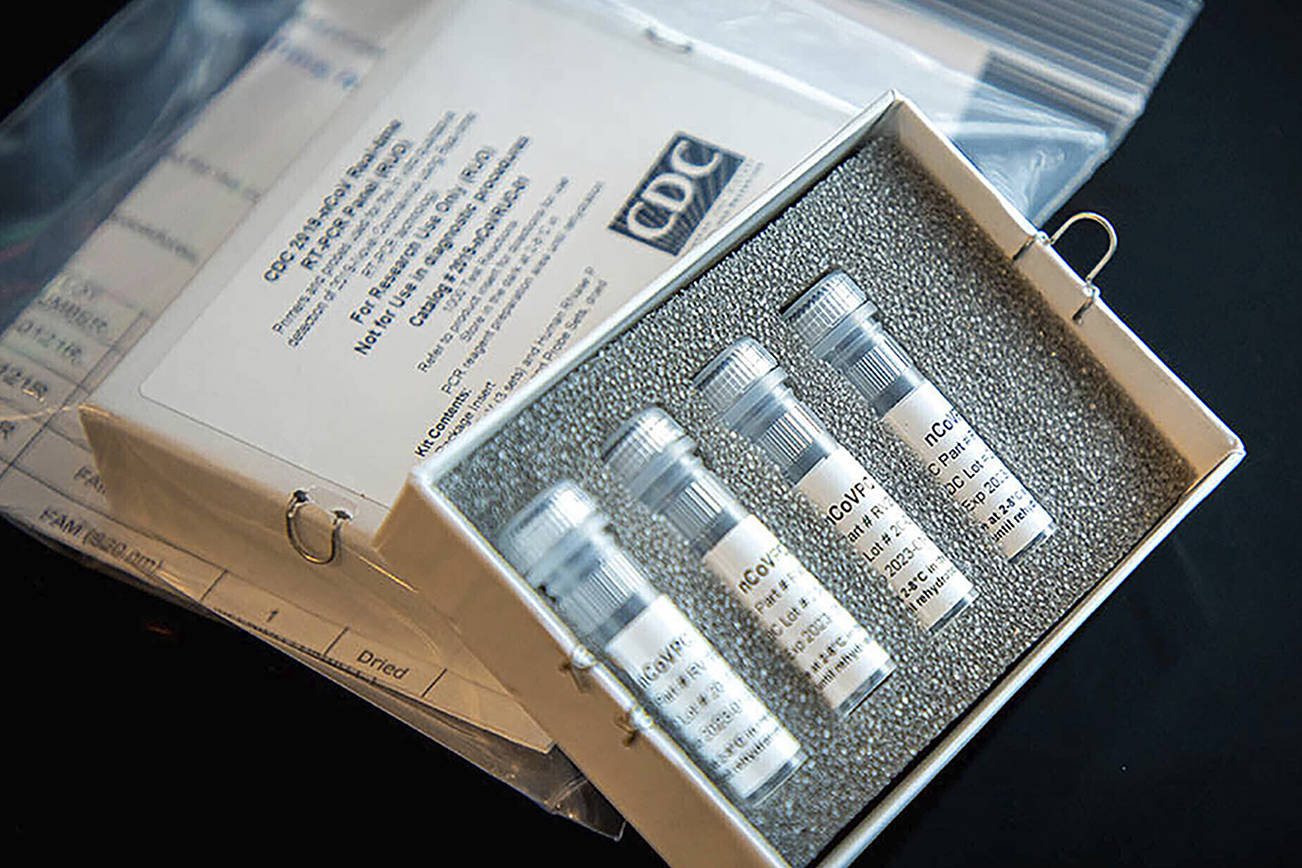As COVID-19 cases rise on the central Kenai Peninsula, a public health nurse said Thursday the actions the public can take to lessen the spread of the new coronavirus have not changed.
“The message still remains the same, though it may be somewhat tiresome,” Leslie Felts, State Division of Public Health nurse manager for the Kenai Peninsula, said. “We still all need to practice social distancing, wash our hands, wear masks in public and try not to touch our faces.
“If you’re ill, don’t go to work and get a test.”
Beyond that, Felts said the public can take steps to make tracing the virus quick and easy.
“If we can get ahold of a lab-confirmed case and ask them to isolate and stop the spread right at that initial case, and not have anyone get it secondarily, that makes a big difference,” she said.
Tuesday, the Kenai Peninsula Borough School District raised the risk level on the central peninsula to high and delayed on-site learning on the central peninsula until at least Sept. 8.
As of Thursday, 31 cases in five days put the central peninsula at 64 cases for 14 days. In order to be at high risk, the central peninsula needs 52 cases or more in 14 days.
Felts said public health works very closely with the school district. She added the district has done a great job setting up the risk levels, which put the southern peninsula at low-risk level and the eastern peninsula at medium-risk level as of Thursday.
According to Felts, public health also provides the district with additional information to help the district make decisions. She said no identification of persons is given to the school district, in order to protect health information.
As the district prepared to make Tuesday’s decision, Felts said a search of central peninsula cases in the last five days showed the cases were not in clusters, came from differing occupations, came from tests both due to illness and tests due to an upcoming medical or dental procedure, came from both symptomatic and asymptomatic people, and came primarily in those over 30. Some, but not most, of the positives were able to be contacted, according to Felts.
Felts said a group of public health nurses, surge workers, school nurses, National Guard members, University of Alaska Anchorage employees, state employees and short-term employees is now in a pool doing contact tracing statewide.
“We don’t necessarily do contact tracing for our own community,” Felts said. “A community member might get called by a public health nurse from other parts of the state. We do try to keep contact tracing as local as we can.”
Relative to other states and District of Columbia, Alaska is doing well in preventing the spread of the virus. According to Worldometer, Alaska is 43rd in cases per 1 million in population. Felts said she believes Alaska’s contact tracing program has played a role in keeping cases down.
About two weeks ago, Felts said it was getting pretty hard to keep up with cases even with the state having contact tracers working from 8 a.m. to 8 p.m.
“Statewide, we caught up on all the cases in all the communities, including Anchorage,” Felts said. “All over, day to day, we are keeping well caught up. There may be a case or two that folds over into the next day.”
Felts said the community has a role to play in keeping contact tracers caught up.
“My message would be to always put down good contact information if you get tested so we can follow up,” Felts said.
Felts said those being tested should put down the phone number where they can be reached the quickest, for example opting for a cellphone as opposed to a home phone.
Knowing your social bubble and keeping it as small as possible also is important, according to Felts. The social bubble is people 6 feet or closer for 15 or more minutes.
“Hopefully that’s not like 30 people you could have spread the illness to,” Felts said. “Keep the contact list small and when you get a call from public health, know who those contacts are.”
Felts said a contact tracer will sometime get in touch with contacts, or other times the person who tested positive will get in touch with those contacts.
According to Felts, contact tracing has been going well, but it also can go better.
“There are people we haven’t been able to get ahold of,” Felts said. “We’re still encouraging people to cooperate with contact tracers when they get that phone call.
“We know it’s not good news and we don’t want to be calling with that news, but the more people cooperate, the better contact tracing will be.”

